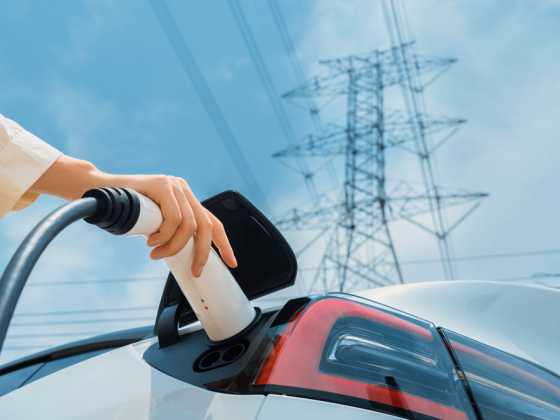Developing the hydrogen fuel infrastructure
As the creation of a hydrogen transport infrastructure in the UK continues apace, Ian Williamson looks at the emergence of one of the most groundbreaking developments in Europe

When I wrote for GreenFleet earlier this year I talked about a number of new hydrogen powered vehicle projects, including Coventry University’s Microcab; Riversimple’s plans for a fleet of hydrogen cars in Leicester; and London’s fleet of eight hydrogen powered buses. Since then, Coventry has launched its new Microcab car and it has joined the CABLED (Coventry and Birmingham Low Emission Demonstrator programme) project that will see the newly-named H2EV vehicle driven by members of the public in the Midlands.
In the last few weeks, Midlands based Riversimple has also announced another demonstration project, this time in Shropshire and Herefordshire. The new Riversimple project puts 30 hydrogen cars in a rural area to show that hydrogen vehicles do not just have to be city cars. In addition, Honda installed a new hydrogen fuelling station in Swindon, bringing the total number of fuelling stations in the UK to 11.
Hytec project takes off
Hydrogen infrastructure is popping up more and more around the UK and new technological developments are making it easier to store, generate and use hydrogen. But perhaps one of the most groundbreaking developments in Europe is going to come together over the next few months. The HyTEC (Hydrogen Transport in European Cities) project, which is part funded by the European Commission will see a network of fuelling stations established in London and Copenhagen.
Taking a lead in hydrogen
The creation of a network of hydrogen fuelling stations in the UK, or anywhere in the world for that matter, is going to take time and investment, but some countries are taking a clear lead.
In the US, Air Products is linking Texas and Louisiana with a new 180-mile hydrogen pipeline. The pipeline links more than 20 hydrogen plants and 600 miles of existing pipelines and makes it possible to transport hydrogen to a network of fuelling stations in these states. In Germany, there is a public-private partnership known as the National Innovation Programme (NIP) which is starting to build-up hydrogen infrastructure in urban areas. The fuelling stations will be supplied with locally-produced hydrogen and plans for hydrogen pipelines are in development. The key to the German model is the belief that a hydrogen transport infrastructure can be built up gradually, through demonstration projects in urban areas around the country, before eventually being linked together in a national network.
We believe this model can work in the UK. Creating pockets of hydrogen infrastructure will allow the general public to get used to the technology while gradually creating both the fuelling infrastructure and hydrogen production facilities that can be connected together in the long-term to form a nationwide low-carbon transport system.
If the UK can learn from those countries taking a lead on hydrogen transport and establish itself as a ‘fast follower’ there is the potential for huge economic gains. The UK can position itself so that when hydrogen cars reach commercialisation (major car companies are committed to doing this by 2015) it is in prime position to take advantage, to the benefit of UK Plc. The opportunity to maximise the UK’s skill base in the automotive supply chain means the opportunity for green jobs in the sector is a real possibility.
Moreover, British industry has, for a long time, led the way in developing the fuel cell technology that sits within hydrogen vehicles. Making the UK a leader in hydrogen transport will allow British companies to thrive in what is likely to be a very profitable industry.
The US and Germany have identified the potential benefits of being a leader in hydrogen transport and are developing the early infrastructure that gives them an advantage over the competition. The UK must ensure it is not left behind by these leading nations.
The HyTEC project aims to put the UK at the forefront of hydrogen transport infrastructure.
More about HyTEC
HyTEC will see Air Products, along with 17 partners from across Europe, work to establish the first hydrogen refuelling networks in London and Copenhagen. There is already one Air Products hydrogen fuelling station in London that is used to fuel Transport for London’s hydrogen bus fleet and Air Products is deploying a second bus refuelling station as part of another EU funded project (CHIC).
The station that is deployed under HyTEC will be strategically located to enable the beginnings of the UK’s first city-wide hydrogen network. The project will also see the deployment of a fleet of 15 hydrogen powered taxis and five Suzuki Bergmann scooters, some of which will be operating in time for the London 2012 Olympics. These new fleets are another opportunity to allow Londoners to experience hydrogen transport first hand.
More importantly, however, the creation of a network of hydrogen fuelling stations opens up the opportunity for multiple fleets of vehicles, with the potential to fill up in different parts of London.
This project is the first of its kind in the UK, but in the long term we would foresee fuelling station networks like this in more of the UK’s cities. The build-up of hydrogen infrastructure in urban centres, in the same way we have seen in the German model, will eventually allow us to connect up our cities and create a national hydrogen infrastructure.
Generating local renewable hydrogen
One of the questions that those of us who support hydrogen transport often get asked is: ‘what about the carbon emissions associated with hydrogen production?’ To be clear, most of the hydrogen used in transport today is so-called ‘brown’ hydrogen. This hydrogen is produced from natural gas reformation. It is important to note, however, that even brown hydrogen is far greener than conventional transport fuels. There can be as much as 70 per cent fewer carbon emissions associated with hydrogen than petrol when the whole process, from the well to the vehicle emissions, is taken into account and you still get the other benefits associated with hydrogen transport, ie no harmful emissions from the vehicle exhaust and a range and fuelling time equivalent to a conventional vehicle.
We expect, however, that hydrogen transport will come to rely on 100 per cent renewable hydrogen and there are a number of ways this can be achieved. In Orange County, Florida, Air Products recently opened a hydrogen fuelling station that draws its hydrogen from the local wastewater treatment plant. Syngas (Methane) from the treatment plant is fed into a fuel cell and reformed into hydrogen which can then be used to power hydrogen vehicles. Other forms of waste also have the potential to generate hydrogen. In Teesside in the North East of England, Air Products is planning to build an advanced gasification plant that will be able to turn municipal and industrial waste into hydrogen. The plant in Teesside will have the power to run 1,000 hydrogen buses every day.
We see no reason why, if the right incentives are in place to encourage hydrogen transport, that an energy station could not be used to supply our fuelling stations in London, or the Midlands, where there are Air Products hydrogen fuelling stations at the Universities of Loughborough, Coventry and Birmingham.
Demand for hydrogen transport
The HyTec project represents an important step forward for the establishment of hydrogen transport infrastructure in the UK. But more support from the UK Government is needed to make more of these types of projects possible.
The government should support the business case for hydrogen and help the industry ensure that the cost of hydrogen at the pump is not higher than conventional fuels. One simple change that the government could undertake quickly would be the recognition that hydrogen is a renewable transport fuel and the inclusion of it in the Renewable Transport Fuels Obligation that currently supports biofuels.
The UK has to ensure that 15 per cent of the energy used in transport comes from renewable sources by 2020. It is essential that this target is met by creating a transport infrastructure that is going to be sustainable in the long term. Hydrogen offers a practical and low carbon alternative to conventional fuels and it can and will be produced renewably. The HyTec project shows industry’s commitment to this technology; now government must show the same commitment.
Written by Ian Williamson, president, European Hydrogen Association
FOR MORE INFORMATION
www.h2euro.org
www.airproducts.co.uk






